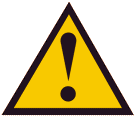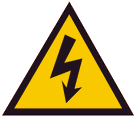|
eDehumidifier Home
Page
Support Home Page
Manual (Instructions for
DH-5-1)
Program for Mold Control
Frequently asked Questions
30 Day Money Back Guarantee
Warranty Information
Privacy Statement
Why you should buy from us!
Why choose our
dehumidifier?
|
|
[Support Home]
Mold Prevention Program
Dehumidifier Program for the prevention of mold and mildew growth in
your boat or RV
Here are a few good guidelines for a mold prevention program to use in
conjunction with your DH- dehumidifier.
Objective
-Help to inhibit Mold and Mildew Growth
-Help to Eliminate Musty Odors
-Improve Air Quality
Procedure
Initial Steps
1. Remove existing mold or mildew
2. Dry Out Your Boat or RV
3. Prep Surfaces
4. Use a dehumidifier - The key to mold control is moisture control.
Continued Normal Steps
5. Proper ventilation is key to mold control.
6.
Keep your boat or RV clean
7. Employ the latest technologies in mold resistant materials and
products.
8. Keep your boat or RV Dry
9. Links
to other resources at the end of this article.
Note:
If you found this article helpful and would like to add suggestions and
helpful tips, email us, we would like to hear from you and add additional
info here.
1. Remove existing mold or mildew
If you already have a mold or mildew problem in your boat or RV, you should
first remove the mold. Here are a few tips on how to remove mold.
| If
your boat or RV manufacturer has provided you with maintenance or
cleaning instructions, you must follow your boat or RV manufacturers
recommendation for cleaning your boat or RV and their recommended
cleaning products. |
In most cases, common household cleaning products and disinfectants are
used for this task. The EPA recommends detergent and water. If you
prefer a variety of marine cleaning products are available for mold cleanup
and mold prevention at your marine store. Available also are
environmentally friendly, biodegradable cleaning products.
The cleanup process involves thorough washing of the walls, floors,
ceilings, paneling, closets, shelves, cabinets and contents of your boat or
RV. Pay close attention to showers and galley counters, areas around the
head, curtains, canvas materials and carpets, as these are highly
susceptible to mold and mildew.
Do not simply cover mold with paint, stain, varnish, or a moisture-proof
sealer, as it may resurface.
Replace moldy shower curtains, or remove them and scrub well with a
household cleaner and rinse before re-hanging them. Carpets are especially
difficult to clean and dry. If you cannot adequately clean and dry these
out consider replacing them.
| Where possible use environmentally friendly,
bio-degradable cleaning products. |
 Have adequate ventilation when using harsh cleaning agents.
Limit your exposure to mold by wearing gloves, a respirator and goggles. Have adequate ventilation when using harsh cleaning agents.
Limit your exposure to mold by wearing gloves, a respirator and goggles. |
 Always
disconnect appliances before cleaning. Always
disconnect appliances before cleaning. |
Empty dehumidifier or air conditioning drain pans daily and clean often. If
possible, have the appliance drip directly into a drain (the DH-dehumidifier is
designed to work this way). Refrigerator drip pan should be cleaned. Follow
manufacturer's instructions for cleaning and maintenance. Always disconnect
the appliance before cleaning.
| Do not pollute. Do not dump waste water, cleaning
products, detergents or other pollutants or garbage into the water.
There are laws concerning polluting the environment. |
In Brief: Pollution Regulations
The Refuse Act of 1899 prohibits throwing, discharging or depositing any
refuse matter of any kind (including trash, garbage, oil, and other
liquid pollutants into the waters of the United States. |
2. Dry Out Your Boat or RV or (keep your boat or RV dry)
High humidity and moist materials provide ideal environments for the
excessive growth of mold, mildew and microorganisms that are always present
in your boat or RV.
After washing everything, dry out the interior and equipment in your boat
or RV.
Use exhaust
fans in the bathroom and galley to vent humid air to the outside. A
clean dry cloth, fans or air blowers helps speed up the drying process. Open
hatchet, portholes, doors, etc. to speed up the drying process.
Dry out carpeting, sails, cushions, life jackets and other equipment
before storing.
 Life Jackets, sails and other marine equipment require
special care and storage to keep them functioning effectively. Be sure
to follow your owner's manual that came with your equipment in the
proper use, care and storage of these items. Life Jackets, sails and other marine equipment require
special care and storage to keep them functioning effectively. Be sure
to follow your owner's manual that came with your equipment in the
proper use, care and storage of these items. |
| A musty odor, signifies the growth of mold mildew and
other microorganisms. |
3. Prep
Surfaces
After cleaning and drying out your
surfaces, prep the surface with mold or mildew block. This is a great
step you can take to help prevent the growth of mold and mildew in your boat
or RV. Mold and mildew block products such as 3M's Marine Mildew
Block, that are designed for marine or RV usage, help prevent mold and
mildew growth, by forming a protective, surface barrier against moisture and
dirt (the root source for mold and mildew growth), and thus help prevent
mold and mildew from taking root.
Prep surfaces such as canvas, cushions, carpet and other fabrics. Wood
and vinyl surfaces should also be treated.
Don't treat wood or ceramic floors or walkways, since these may become
slippery. Prep walls and surfaces in high humidity areas such as the
head and galley.
4. The key to mold control is moisture control - use your
dehumidifier
If humidity is the enemy then your dehumidifier is your ally. Keep outside
doors close to prevent new humid air from entering the cabin. Use your
dehumidifier to remove moisture from the air.
After cleaning, drying and prepping
surfaces, for best results, close hatchet, portholes, doors, etc. Set the dehumidifier
to 60% (RH). The EPA recommends a setting between 30% and 50%RH to decrease
mold growth. The dehumidifier will turn itself on and off at the level you
preset. Locate the dehumidifier where the air is stagnant or mildew has
formed in the past. Route the drain hose to a suitable drain exit such as
galley sink shower drain or bilge. Direct the exhaust airflow towards areas where
moisture is a problem; v berth or head.
Consider using a fan to help increase the circulation of the air towards the
dehumidifier.
| When not in use consider storing life jackets, sales
and other marine equipment sensitive to humidity in the enclosed low
humidity, cabin climate you have created with your dehumidifier.
Furthermore, you can leave lockers, cabinets ajar, to allow dry air to
enter these. |
 If
you have employed the use of extensive fine wood flooring, paneling,
trim, cabinets and furniture in your boat or RVs interior, you will want
to keep your humidity levels between 50% RH and 60% RH. At levels lower
than 50% woodwork may become dried out. If
you have employed the use of extensive fine wood flooring, paneling,
trim, cabinets and furniture in your boat or RVs interior, you will want
to keep your humidity levels between 50% RH and 60% RH. At levels lower
than 50% woodwork may become dried out. |
...Continued Normal Steps
5. Proper ventilation is key to mold control.
Key to mold control is proper ventilation. Use exhaust fans
(especially in the head and galley) to vent hot humid air outside.
When you are underway open a hatch on the windward to circulate and vent
stale, damp air outside. Fresh outside air is is less polluted and
quickly reduces the humidity, pollutants and micro organism levels in the
indoor air. Of course you can't always ventilate (since you don't want
to lose your conditioned; air cold or warm), but whenever possible
ventilate, ventilate, ventilate. The objective is to keep your
interior dryer and less polluted.
6.
Keep your boat or RV Clean:
Besides the humidity necessary for mold, mildew, bacteria and other
microorganisms to thrive in, dirty surfaces provide an ideal food
surface for microorganisms. So keep your boat or RV clean.
7.
Employ the latest technologies in mold resistant materials and products.
Manufacturers continue to improve
mold resistant materials. Because boats and RVs are susceptible to
mold and mildew growth. Use such products as mold resistant curtains,
cushions, carpet, fabrics and paint. This will help keep your boat or
RV staying cleaner, smelling better, and looking newer.
8. Keep your boat or RV Dry
By keeping a mold prevention program you will keep your boat or RV
interior Dry, looking newer, and smelling fresher.
9. Other useful resources
Want to know more about molds? The EPA has many good articles on this
subject. Here is the link. It includes a mold basic, cleanup guidelines,
moisture and mold Prevention and Control Tips.
http://www.epa.gov/mold/moldguide.html and
http://www.epa.gov/mold/cleanupguidelines.html
Note:
If you found this article helpful and would like to add suggestions and
helpful tips, email us, we would like to hear from you and add additional
info here.
|
|


![]()